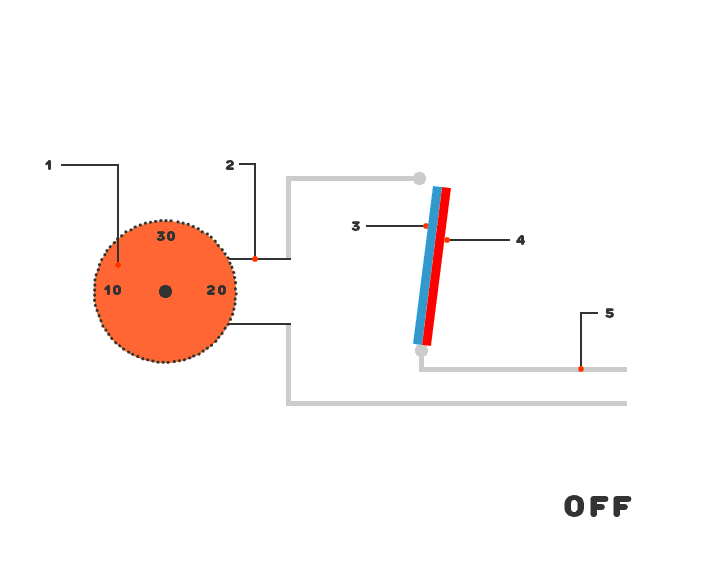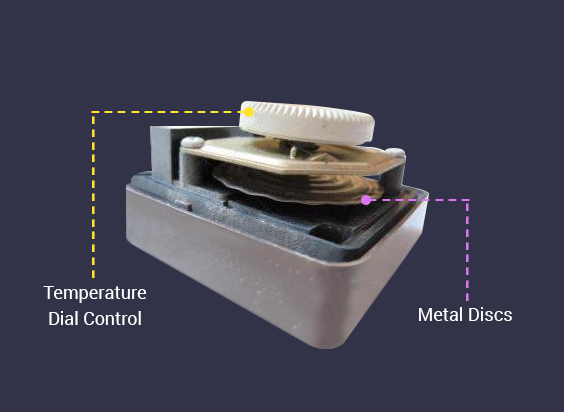When summer sets in, it can be a misery to wage a battle with the heat. Thankfully, you can turn down the thermostat of your HVAC unit and create a comfortable and pleasant indoor temperature. Similarly, in the winter months, you can crank up the thermostat and keep cozy and warm. Homeowners often don’t pay too much attention to the humble thermostat, which is a cleverly designed gadget that ensures ambient temperature is always comfortable, regardless of the outside temperature.
What is a Thermostat?
Before looking at how a thermostat works, it is also important to understand what a thermostat is. It is a gadget that is part of your heating and/or cooling system that silently measures the temperature inside your home and then decides based on the reading whether the heating or cooling needs to be activated.
The thermostat was invented in the 17th century, and it consisted of a float present in a mercury thermometer and connected to a damper cover placed on a furnace. When the mercury in the thermometer reached a certain level, the float moved, causing the damper to close. Although a simple device, it paved the way for modern thermostats.
Modern-day thermostats do the same kind of work, just with a lot more technology to assist them. Today’s thermostat is a heat-activated switch that comes with a temperature sensor. This switch opens or closes, causing the electrical circuit that is responsible for the heating and cooling to get completed or interrupted.
Thermostats can be mechanical or electronic. Both are responsible for keeping a close check on the indoor ambient temperature, but function in a different way. And, some thermostats are so advanced that they can be controlled remotely using a smartphone or Internet connectivity.
Working of a Thermostat
Thermostats work on the principle of thermal expansion. This principle governs the switching off or on of the electric circuit. The most common types of mechanical thermostats typically use either bimetallic strips or bellows filled with gas. While digital thermostats use the same principle, but everything is controlled by a chip and built-in minicomputer.
Bimetallic Strips: As the name indicates, this thermostat has two pieces of metals, which have varying coefficients of expansion, but are connected to each other with the help of bolts to form a bimetallic strip. This strip works like a bridge to connect or disconnect the electric circuit of the heating or cooling system. When the bridge is down, the circuit gets completed, causing the heating or cooling to come on. However, with time, the strip gets hot, causing one of the metal pieces to get hotter than the other. The hotter strip expands, causing it curve and bend. This, in turn, breaks the circuit, the heating or cooling switches off.
Once the circuit is broken, there is no electricity passing through the bimetallic strip. So, it begins to cool down gradually. The expanded metal piece starts contracting, causing it to return to its original size. The moment that happens, the circuit is completed once again and the heating or cooling resumes.
You can adjust the temperature using a thermostat to change when the electric circuit of the heating or cooling unit completes or breaks off. The rate at which the metal in the bimetallic strip cools is dependent on how well your home is insulated. In typical cases, it takes about an hour or so for the bimetallic strip to cool down and the thermostat to switch on.
Bimetallic Strip and Electric Circuit
Legend
1 = Outer dial to adjust temperature
2 = Circuit that connects the dial to the temperature sensor
3 = Bimetallic strip showing the first metal – brass
4 = Bimetallic strip showing the second metal – iron
5 = The inner electric circuit that is connected when the bimetallic strip is down and interrupted when the bimetallic strip expands due to heat
Bellows with Gas: One of the problems with bimetallic strip is that it takes a while to heat and cool. Hence, when you require the temperature to change quickly, it will not happen. This is where bellows with gas and two metal discs come in. The metal discs have a wide surface area, allowing them to quickly heat. So, when an electric current passes through the circuit, the gas in the bellows heats and the bellows expand. This causes the two metal discs to separate, and the disc that is posterior in position is pushed towards a tiny switch located at the center of the thermostat. This immediately interrupts the circuit, causing the heating or cooling to switch off. Then the gas in the bellows starts cooling down, causing the bellows to contract. This forces the metal discs back together, resulting in the inner disc moving away from the tiny switch. So, the circuit gets completed and the HVAC unit turns on again.
Electronic Thermostats: Today, thanks to advances that technology has made, there are electronic thermostats that come with electronic heat sensors and circuits that can sense any change in the ambient temperature and automatically turn on the heating or cooling. They are similar to a mini-computer and can be programmed. An electronic thermostat contains a device known as thermistor, which is responsible for measuring the ambient temperature. The thermistor is also a resistor that facilitates changes in the electrical resistance as that temperature changes. The thermistor generates heat when electrical current passes through it. This heats the thermometer coil, which unwinds with heat, causing a microcontroller in the electronic thermostat to switch off. As a result, the heating or cooling shuts off. Once the thermistor and thermometer coil cool down, they go back to their original position, causing the HVAC unit to turn on.
A digital or electronic thermostat prevents wastage of energy. It allows you to program the heating and cooling of your home for different time periods, so that minimal energy is used when optimal cooling or heating is not required. It is a wonderful way to save money and energy.
The Bottom Line
With the advent of smartphone, today, you can get Wi-Fi enabled thermostats that you can use to control the heating and cooling of your home using your smartphone. All you require is an app to get the thermostat going, and these apps hardly cost money, making it one of the most effective technology advances of our time.



Comments are closed.